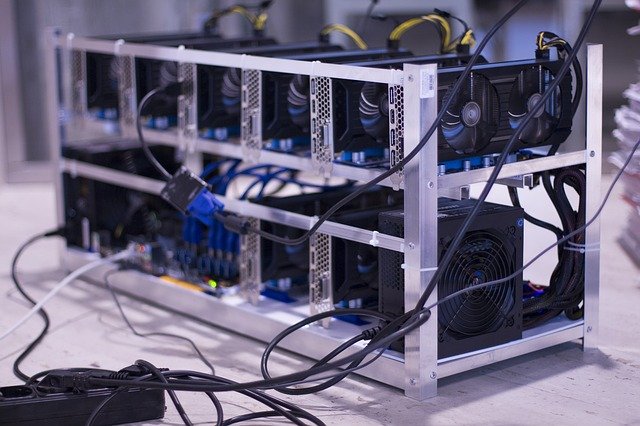What Is a Helium Miner? A Cheap and Profitable Miner
What comes to your mind when someone is talking about crypto mining?
A rig with many graphic cards and wires shattered all around for connection or an expensive hardware box or sometimes a rig with those boxes, right?

But now the scenario has changed. You don’t need an expensive graphics card or box with a fan called ASIC to do crypto mining. There is a device, which is the size of your wifi router, that can do crypto mining called Helium Miner.
Before knowing what exactly Helium Miner is, you have to know about the blockchain network powering the device Helium Network.
What Is a Helium Network?
Helium is a blockchain based decentralized wireless network fuelled by cryptocurrency.
Simply put, Helium Network is aimed to create a wireless network without relying on satellite or a cellular tower infrastructure.
To achieve this decentralized wireless infrastructure Helium uses a device called HotSpot, a small-router radio device.
Using this, anyone who joins the network and provides coverage earns a native token HNT.
The device uses a radio signal for providing the coverage; this allows people to have wireless access without relying on centralized infrastructure and also makes the Helium network an inexpensive option for internet access, especially in low data areas where WiFi is inaccessible and cellular data would be extremely expensive.
What Is a Helium Miner?
Helium Miner is a device called a hotspot that offers wireless network coverage using radio waves.

These devices can connect and exchange data, providing a much wider range of connections than WiFi.
To facilitate communication with each other, they have to connect to the Helium Network, which uses blockchain, and authenticate the communication using the consensus called Proof-Of-Coverage.
A combination of these technologies can create a wireless network that’s more reliable than the network offered by traditional wireless providers.
How Does Helium Miner Work?
Helium Miner or a hotspot uses the LoRaWAN (Long Range Wide Area Network) transmitter to communicate with other hotspots nearby these hotspots connected to the Helium blockchain.
Using the Host Sopt Helium miner earns HNT tokens in two ways, the first is simply by transmitting the data, and the second is by providing the coverage.
To be specific, a hotspot transmitting more data earns more but to check the authenticity of that hotspot. Helium Network uses the Proof-Of-Coverage(POC) consensus, which conducts random tests. A hotspot has to witness or pass randomly assigned tests.
POC consensus routinely picks hotspots to challenge other hotspots around them through radio waves to prove to the network that they’re recording the quality of the coverage.
The challenged hotspot must relay accurate data to prove it’s operating correctly and in the location it claims. Other nearby hotspots witness the challenge by verifying the information relayed and checking that the process goes as expected.
When the POC challenge is completed, the HNT token is automatically sent to the Helium Hotspot app connected to the miner.
Within this POC challenge mechanism, hotspots are bifurcated as the challengers, transmitters, and witnesses.
- Challengers:
A challenger hotspot is one which issues challenges to another hotspot.
- Transmitters:
Transmitters AKA Challengee, Beaconers is the receiver of the challenge.
- Witnesses:
Witnesses are the nearby hotspot to the transmitter that reports the existence of the challenge data packets which are transmitted.
Even though the hotspot earns the HNT after completing all the procedures. As soon as the HNT is mined, it’s burned from the circulating supply of HNT to produce Data Credits.
Data Credits are used by the devices to send the data on the network and for the blockchain transaction fee.
This Burn-and-mint equilibrium is created when HNT and Data Credits are created and removed, thus generating a supply-and-demand-based Helium economy.
Types of Helium Miner.
Initially, when Helium Network launched its mining HotSpot device, it became popular, creating a scarcity in the market.
To balance the supply and the demand Helium community decided to allow third-party manufacturers to build and market the device.
Now many manufacturers supply HotSpot devices with the name listed below in the image.

To meet the market demand, the supplier started to manufacture the devices based on the usage type when initially there was only one hotspot that did all the work of challenger, transmitter, and witnesses but now hotspots bifurcate into different types.
Full HotSpots:
These hotspots maintain the full copy of the Helium blockchain and receive a reward for all the participant’s activities, including proof-of-concept age.
Light HotSpots:
Light HotSpots uses the Light HotSpot software and the validator to participate as the full hotspot without incurring the additional costs of keeping a local copy of the blockchain. In addition, they are rewarded for proof-of-coverage and data transfer activities.
Data-only Hotspots:
These hotspots only get rewarded for data transfer, and also light hotspots use the validator to get information about the Helium blockchain.
Profit and the Cost of Helium Miner.
As I stated earlier, Helium Mining is done at a lower cost than ASIC or GPU mining.
You can get a Helium Miner on Amazon for $174 where ASIC costs more than $1000 and building a powerful GPU mining rig costs more than $1000 easily.
So the entry-level financial barrier is very low in Helium mining, but you don’t see many Helium miners around your neighbors if this is that easy to do.
One major hurdle with Helium Mining is. You have to have other Helium miners nearby to catch the signals and solve challenges or give a challenge to other hotspots.
Typically Helium says that there should be a hotspot every 300 to 500 meters as a rule of thumb.
And if you don’t have any Helium hotspots hub nearby, you have to install powerful antennas to catch and broadcast signals which you have to bear additional cost.
You can get these powerful antennas on Amazon for around $70 – $80.
Electricity cost is nearly nil in Helium Mining which is the most significant advantage.
Bearing all these costs, you can earn a decent amount of HNT tokens. Even in February 2022, a participant claimed that he was able to earn more than $400 per month.
To get an exact picture of the profit, head over to Helium Mining Explorer, which shows the cluster of hotspots around the globe and the mining status.
Conclusion.
Ultimately profit from Helium Mining depends upon the market condition of the HNT token, so don’t expect a 2X or 3X return from the first day.
Even considering that the maximum supply of HNT tokens is limited to 223 million, of which 30% is allocated to network data transfer, 35% is allocated to Hotspot infrastructure, and the last 35% is allocated to Helium governance.
And also, don’t forget to check the Helium Hotspot seller’s authenticity before buying.
